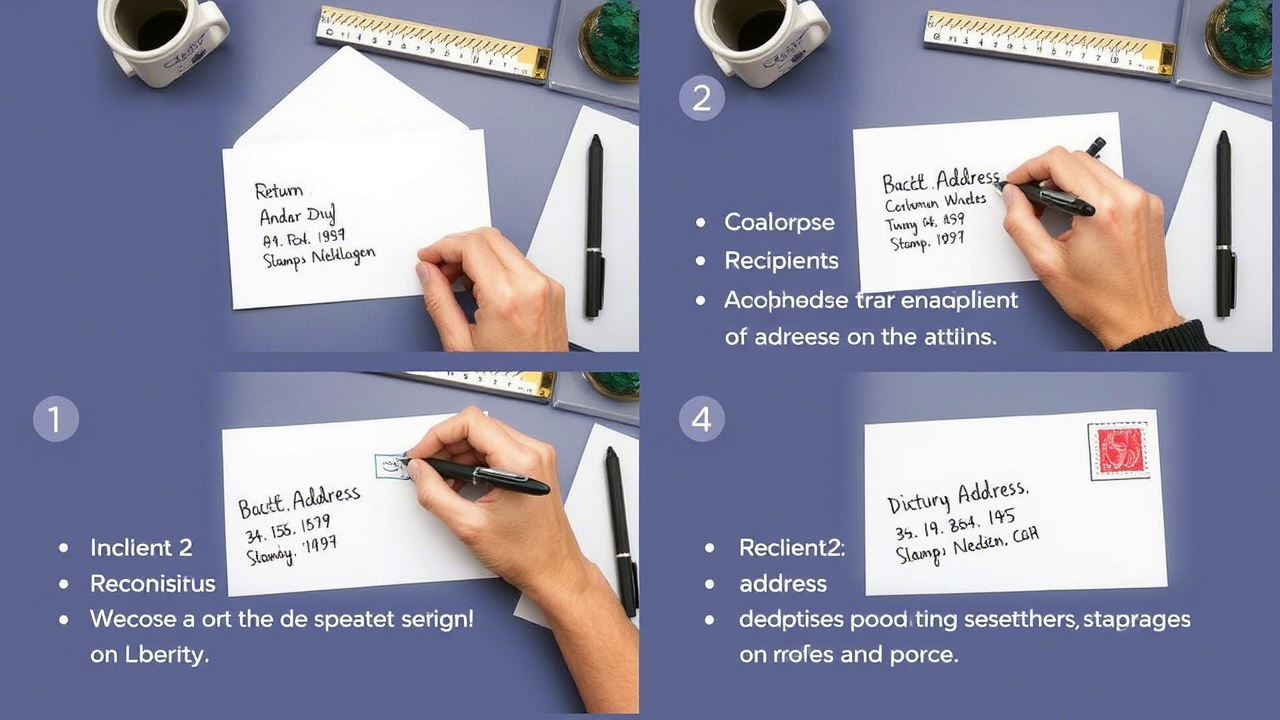Introduction: Why Proper Envelope Addressing Matters
Addressing an envelope correctly isn’t just about getting a letter from Point A to Point B—it’s about ensuring timely delivery, avoiding costly delays, and presenting a professional image. Whether you’re sending a job application, wedding invitation, or holiday card, mastering the art of envelope addressing is essential. In this guide, we’ll walk you through how to address an envelope step-by-step, with tips for domestic and international mail, common mistakes to avoid, and tools to simplify the process.
Step 1: Gather Your Materials
Before diving into formatting, ensure you have the right tools:
- A clean, undamaged envelope: Choose the appropriate size and type (e.g., standard, legal, or padded for international shipments).
- Pen or printer: Use a dark ink pen (blue or black) for handwritten addresses or a printer for crisp, professional results.
- Address book or contact manager: Keep recipient details organized.
- Postage stamps or printed shipping labels: Use a scale to determine weight and required postage.
Pro Tip: For frequent mailing, invest in address labels or templates to save time.
Step 2: Write the Sender’s Address (Return Address)
Start with your address in the top-left corner. This ensures the envelope can be returned if undeliverable.
Format:
[Your Full Name]
[Your Street Address, City, State, ZIP Code]
[Country (optional for domestic mail)] Example:
Jane Doe
123 Main St, Apt 5B
Springfield, IL 62704
🔍 Key Considerations:
- Use the official USPS address format to prevent errors.
- Avoid abbreviations like “St” for street; opt for “Street” if handwriting.
- For businesses, include the company name below the sender’s name.
Step 3: Write the Recipient’s Address
Center the recipient’s address on the envelope, roughly 1 inch from the bottom.
Format:
[Recipient’s Full Name/Title]
[Company Name (if applicable)]
[Street Address, City, State, ZIP Code]
[Country (mandatory for international mail)] Example:
Dr. John Smith
Acme Corporation
456 Oak Avenue, Suite 200
Riverside, CA 92507
USA
📌 Critical Tips:
- Double-check spelling, especially for cities like “Wichita” or “Mississippi.”
- Use the recipient’s title (e.g., Dr., Rev.) for formal mail.
- For apartments or suites, write “ Apt 5B” or “Suite 200” after the street address.
Step 4: Format the Address Correctly
Follow these rules for clarity:
- Font and Size: Use at least 10-point font if printing; avoid cursive handwriting.
- Spacing: Leave ample space between lines and margins.
- Country Names: Always include the country in capital letters for international mail (e.g., CANADA, MEXICO).
- Avoid Punctuation: Skip periods in state abbreviations (CA instead of CA.).
Example of Poor Formatting:
John Doe
123 Pine St.
Lakeside, TX 75001
Improved Version:
John Doe
123 Pine Street
Lakeside TX 75001
Step 5: Apply Postage Correctly
Place stamps or printed labels in the top-right corner. For oversized envelopes or international mail:
- Weigh the envelope: Use a digital scale to determine postage.
- Visit USPS or a shipping service: Calculate costs using USPS’s Postage Calculator.
- Use Forever Stamps for domestic First-Class Mail (currently $0.63 in the U.S.).
Step 6: Special Considerations for International Mail
Addressing an envelope internationally requires extra care:
- Country Name: Always include it in all caps at the bottom.
- ZIP Codes: Some countries use postal codes (e.g., UK postcodes); research formats beforehand.
- Language: Write the recipient’s address in the local language and English.
Example (France):
Jean Dupont
5 Rue des Champs-Élysées
75008 PARIS
FRANCE
🌍 Pro Tip: Use Universal Postal Union (UPU) guidelines for global standards.
Step 7: Double-Check for Common Mistakes
Avoid delays caused by:
- Missing ZIP Codes: Even one missing digit can derail delivery.
- Faded Ink: Test your pen on scrap paper first.
- Incorrect Titles: Use “Attn:” for specific recipients in companies.
- Overlooking Address Changes: Update your contacts regularly.
Conclusion: Mastering the Art of Envelope Addressing
By following these steps, you’ll ensure your mail reaches its destination swiftly and professionally. Remember, attention to detail reflects your reliability—whether you’re a student, entrepreneur, or busy parent.
Frequently Asked Questions (FAQs)
Q1: Can I use emojis or decorations on an envelope?
A: Avoid them—they may interfere with automated sorting machines.
Q2: What if I address the envelope incorrectly?
A: USPS will attempt delivery but may return it if undeliverable.
Q3: How do I address a package differently?
A: Follow the same format but include “Attn:” for specific recipients and ensure the sender’s address is on both the envelope and packaging.
Q4: Should I include a phone number on the envelope?
A: Not mandatory, but it helps couriers contact you if needed.
Q5: Can I reuse an envelope with an old address?
A: Only if you completely cover the previous address to avoid confusion.
Watch Our Video Guide
For a visual walkthrough, check out this tutorial on proper envelope addressing:
Final Thoughts
Addressing an envelope might seem trivial, but it’s a small task with big implications. By optimizing your process with the right tools and knowledge, you’ll save time, money, and frustration. For more tips, explore our guides on how to write a formal letter or packaging hacks.
Ready to level up your mailing game? Share this guide or leave a comment below with your favorite addressing hack!

